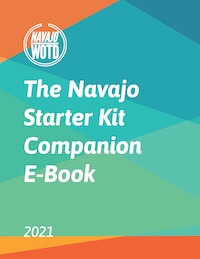naaldlooshii
four legged animal(s)
nahl dloh shee
Now that you’re familiar with ch’osh, today we’re introducing the Navajo word for ‘animal.’
The core part of the word, naaldloosh, translates roughly to English as “(it) walks around/about.” Inside that word is -dloo- which can indicate the act of walking.
As a general term, naaldlooshii refers to things that walk around on four legs. But, in some cases humans are spoken of as being a part of that sphere — we need a lot of the same things, like food, water, and shelter, in order to carry on.
